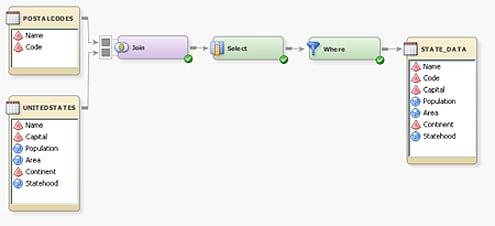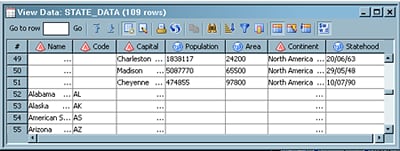Selecting the Join Type
Tasks
Change Join Types in a Sample SQL Query
Examine a sample SQL query in a SAS Data Integration
Studio job to see the effects of changing the join types that are
used in the query. The sample query contains the tables and columns
that are listed in the following table:
The join
condition for the query is POSTALCODES.Name = UNITEDSTATES.Name. The
query is depicted in the following display.
Notice that the query contains an inner join and a
WHERE statement. These components are included by default when a query
is first created. The following table illustrates how the query is
affected when you run through all of the available join types in succession:
A section
of the View Data window for a sample query that includes a union join
is depicted in the following display.
These
joins are contained in the FROM clause in the SELECT statement, which
comes earlier in an SQL query than a WHERE statement. You can often
create more efficient query performance by using the proper join type
in a SELECT statement than you can by setting conditions in a WHERE
statement that comes later in the query.
Copyright © SAS Institute Inc. All rights reserved.

